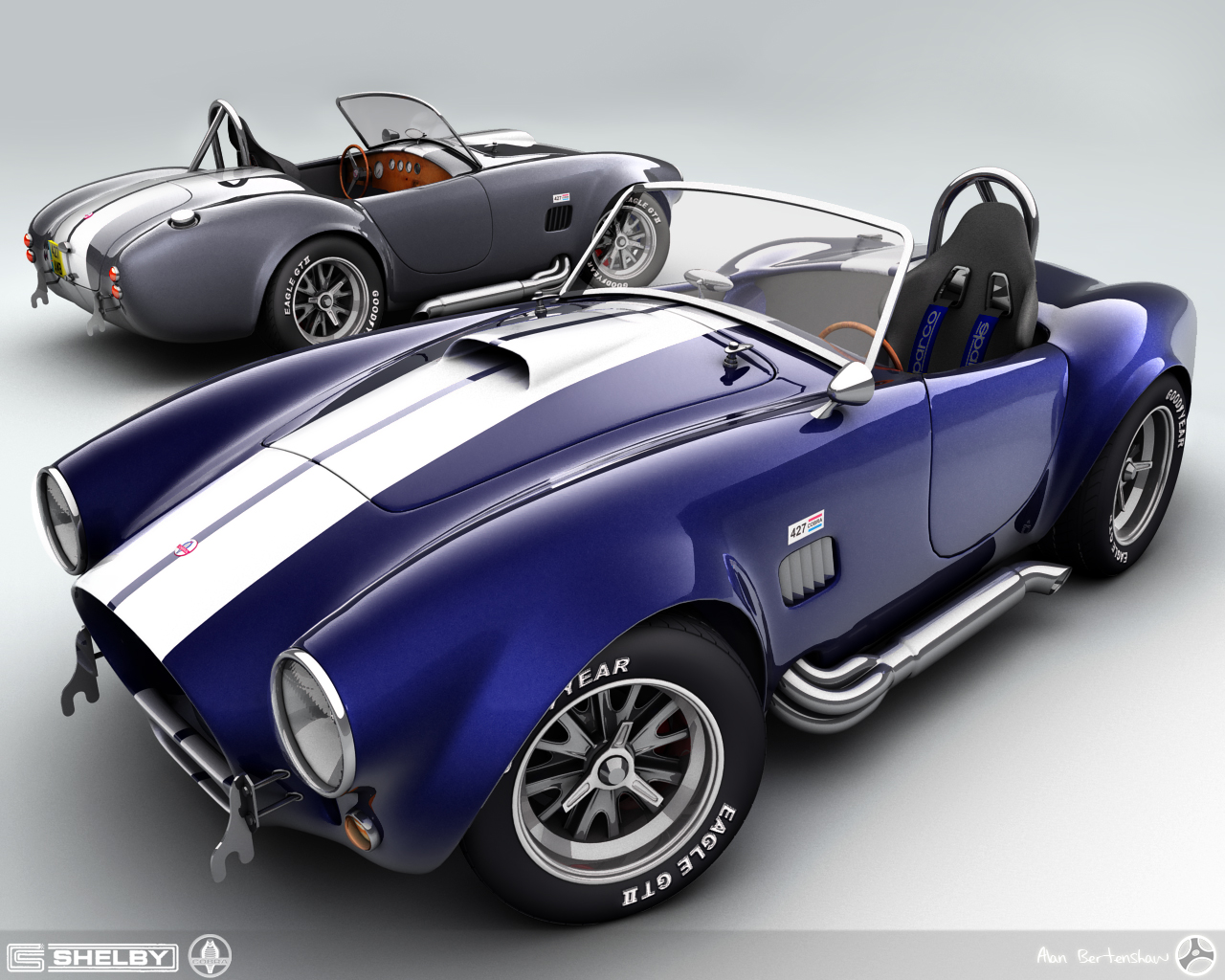
1966 Shelby Cobra 427 S/C
1966 Shelby Cobra 427 S/C.The story of the Cobra begins as early as 1959 when Carol Shelby raced for Aston Martin, winning the 24 Hours of Le Mans. Along the way he probably took notice of a well performing AC Ace that would become a foundation for his next venture.After quittingracing, he return to America to build his own sportscar, turning to Charles Hurlock of AC Cars to supply a chassis and body that was suitable for the new 260 cubic inchFord V8. After considerable racing success, Ford provided the even larger 427 FE engine. By 1965, chief engineer Ken Miles wanted to fit thengine to win SCCA’s A Production Class and stay ahead of the Corvette Grand Sport.

1966 Shelby Cobra 427 S/C
1966 Shelby Cobra 427 S/C.With assistance from Ford and AC Cars, the team at Shelby American modified the existing AC chassis design to accommodate the big block engine. The completed design was called the mark III chassis was manufactured with larger and wider spaced chassis rails. Shelby ordered 100 of these from AC Cars.
Due to the weight of the engine the brakes and suspension were also upgraded. The body was featured prominent wheel arches to fit wider magnesium wheels and tires. Competition features included an oil cooler, side exhausts, large fuel filler, 42-gallon fuel tank, front jacking points and a roll bar.

1966 Shelby Cobra 427 S/C
1966 Shelby Cobra 427 S/C.Naturally, the 427 Cobra was expected to compete at the top level of motorsport and abroad. Shelby went into immediate production, finishing just over 50 cars when bad news struck. The FIA visited and was unsatisfied with the minimum number of cars required to homologate the 427 in the World Sports Car Championship. Needing 100 cars or more, Shelby's market to was immediately slashed, he cancelled his order with AC, but still had 53 big block Cobras nearly completed.
1966 Shelby Cobra 427 S/C
1966 Shelby Cobra 427 S/C.Not soon after Shelby started fitting the cars with production windscreens. Out of 53 Cobras, CSX3001 through CSX3053, three were sent to Ford, 19 were sold for competition and the rest were converted for road use.
On the road, the S/C was a radical machine. Sports Car Graphic magazine editor Jerry Titus reached 0-100 mph in 13.2 seconds. By comparison the nearest Aston Martin of the day was barely capable of less then twenty seconds.
Due to the very limited production, original S/Cs are a rare sight. Only Shelby's personal Super Snake was faster, using twin turbochargers to offer 800 bhp.
